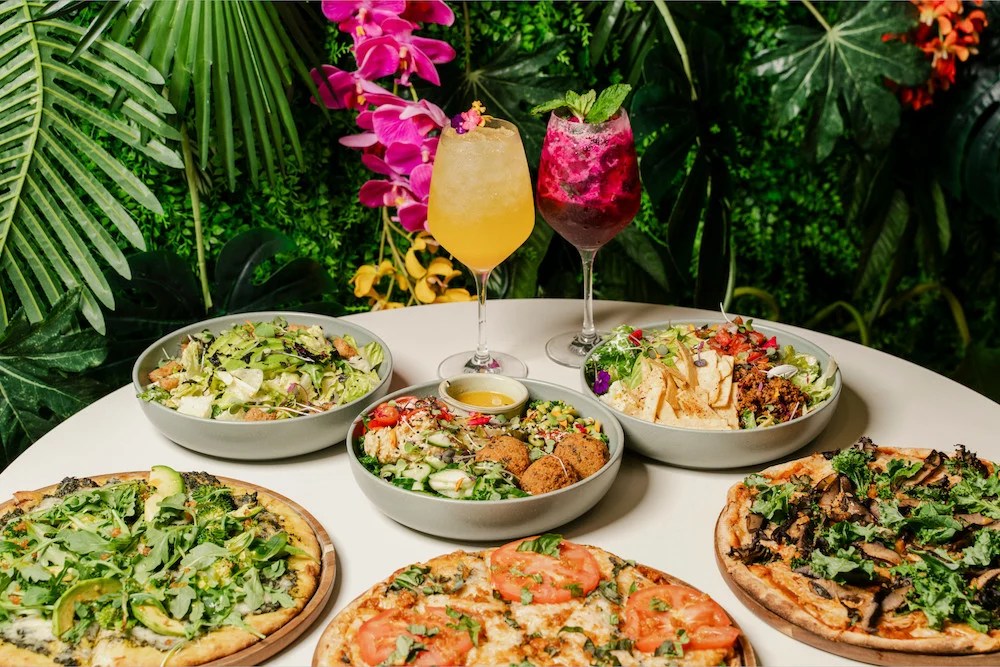One chef looking to pave the way for more accessible and delicious plant-based cooking is Horacio Rivadero, the award-winning chef behind SoBe Vegan, a fast-casual vegan restaurant in Miami, Florida, who is elevating the vegan culinary industry and reconceptualizing vegan dishes while paying homage to his South American roots.
Ahead, Rivadero shares his thoughts on why plant-based cooking doesn’t need to look or taste a certain way, despite what it was once made out to be: bland and boring. “This is easily the biggest myth about plant-based cooking,” Riverado says. In contrast, Rivadero is known for his flavor-rich, vibrant, and hearty Latin American vegan food—that has plenty of sazón—and happens to be 100 percent plant-derived.
The biggest misconception about plant-based cooking, according to a vegan chef
When thinking about Argentinian cuisine, the first thing that may come to mind is meat, and lots of it. After all, the country is widely known for its deeply-rooted asado culture (Argentinian barbeque). So, when Rivadero (a born and raised Argentine) began dabbling in plant-based eating—let alone cooking—he found that there was a lot to learn. “Argentina is a country where the food is based on a lot of animal protein. I remember eating meat seven days a week [growing up],” Rivadero says.
However, during the COVID-19 lockdown—as many of us can relate—he began experimenting with plant-based cooking. “During the pandemic, I think everyone looked for a more conscious way to live and incorporate new habits. At the same time, a lot of startups began making gluten-free and plant-based dishes from home, and once everything opened back up, they started to bring those recipes into the restaurant scene and now it’s much bigger and more common than ever before,” Rivadero says.
As Rivadero’s curiosity, and, in turn, passion for plant-based cooking grew, he quickly realized that plant-based cooking doesn’t need to look or taste a certain way. According to him, just about any recipe can be turned into a plant-forward meal.
Something Rivadero admits he only learned through experimentation working with plant-based ingredients over time. “As a Latin American immigrant, I at first didn’t know much about plant-based cuisine. When I started cooking I was trained in a ‘traditional’ kitchen with meat. Then, I was introduced to a fully plant-based chef and felt I wanted to help and make plant-based recipes that are traditional in the Latine community,” Rivadero says. Since then, he’s made it his mission to make delicious plant-based cuisine with a secret ingredient: his Latine palate.

According to Rivadero, there will always be hurdles to convincing folks to dapple in vegetarian dining—but nothing a delicious dish or two can’t cure. “Even today when I tell people what I do, [sometimes] their first question is: Where is the protein? I think that in the past a lot of people thought that a vegan diet was a salad with no flavor and no protein, and that comes from a lack of knowledge on plant-based dishes and ingredients.” But Rivadero is hoping to change that common misconception one Latin American-inspired vegan dish at a time.
“It’s a super friendly and fun way to introduce and educate others on this culinary category,” Rivadero says. (We firmly agree.)
A few of Rivadero’s specialties include: Argentinian empanadas made with ingredients like jackfruit, mushrooms, almonds, and carrots (to sub for the meat commonly found in the traditional versions) or his tasty walnut picadillo (featuring soaked and ground walnuts with veggies to mimic the flavor and texture of ground beef). “Vegan meats may taste good, but are not always the healthiest option. I always try to find similar textures that can be made in the most effective, conscious, and healthy way possible while adding new flavors. I am in a constant search for ingredients that give me the ability to do this,” Rivadero says.
An RD shares the top sources of vegan and vegetarian protein:
Well+Good articles reference scientific, reliable, recent, robust studies to back up the information we share. You can trust us along your wellness journey.
- Grummon, Anna H et al. “Impact of Health, Environmental, and Animal Welfare Messages Discouraging Red Meat Consumption: An Online Randomized Experiment.” Journal of the Academy of Nutrition and Dietetics vol. 123,3 (2023): 466-476.e26. doi:10.1016/j.jand.2022.10.007
- Clem, Julia, and Brandon Barthel. “A Look at Plant-Based Diets.” Missouri medicine vol. 118,3 (2021): 233-238.
